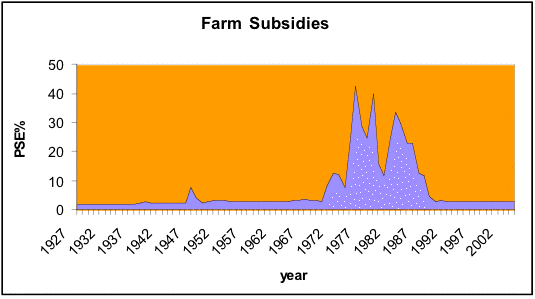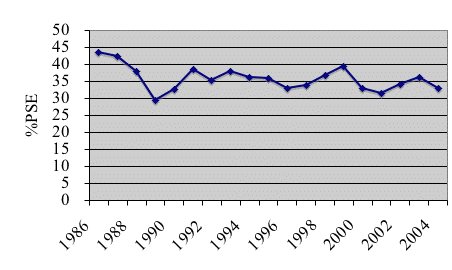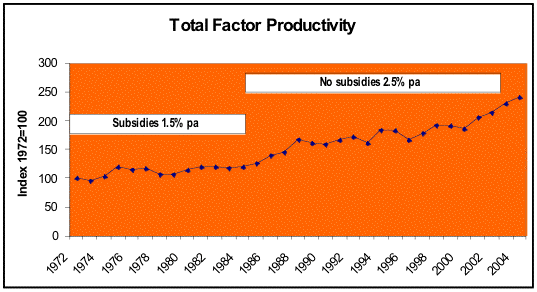Lattimore goes on: "
Some perspective on these TFP growth rates
may be gained by considering that at a TFP growth rate of 1.5% pa, it
would take nearly two generations to double a farmers income but at
2.5%, it would only take 1 generation.
The losers were those farmers who
left or were forced out of the industry while farmland prices remained
low. There were some farmer suicides and there was a high incidence of
personal and social anxiety in rural areas. Farm employees who were
laid off had to find alternative employment, often in other regions.
Government overestimated the number
of farms that would be declared bankrupt or otherwise forced off their
farms. During the reforms, government forecast that around 20% of
farmers would lose their farms. In the event, only about 1% of farmers
took exit packages and about 5% of farmers left the land over the
period 1985-89. These numbers are not significantly greater than the
normal rate of farm bankruptcies."
This final point illustrates the well-known adage: "borrow
£10,000 from the bank and you can't pay it back, you have a
problem - borrow £10,000 million and you can't pay it back, the
bank has a problem". NZ Banks carried a substantial portfolio of
farm debt, and could not afford to declare it a 'write-off', especially
as the immediate response to the reduction/elimination of
subsidy was a substantial devaluation of the farm assets (including
land), which, In NZ's case was also exacerbated by high interest rates
(as a cure for the rapid inflation of 20% or so at the time of the
reforms). Instead, the banks took the commercially prudent course of
restructuring (re-organising) farm debts (to longer payback periods,
for instance, with smaller annual service payments), to tide viable
farms (most of them) over the short term upheaval until they returned
to profitability. Incidentally, this form of indirect
assistance to farmers (financed by the bank shareholders) is of little
use to those farms at the stage in their life cycles when they are
largely free of debt, but I have no information on this for NZ.
In addition, as Lattimore points out: "
The
overall New Zealand economic reform programme was technically
inefficient in the sense that it imposed unnecessary cost on farmers.
Net farm incomes and farmland prices did not have to fall as much as
they did in the short-term. Unfortunately, for farmers, New Zealand
policy generally was in crisis and the timing and sequencing of the
reforms was dictated by political realities rather than good
planning. Where reforming countries already have a reasonably
stable macroeconomic environment, farm subsidy removal would be much
less painful that it was in New Zealand." These reforms
were carried out during a period when the NZ economy was recovering
from a particularly difficult period of high inflation, and chronic BoP
and budget deficits. Under more (hopefully) normal conditions,
the transition to free(r) trade would be much easier.
Conclusion
In short, removal of subsidy need not spell the end of an agricultural
industry - rather the reverse, as the NZ experience demonstrates. Of
course, NZ agriculture has a
comparative
advantage - it is generally recognised to be the world leader,
especially in sheep and dairy production, because the islands' natural
and human resources and climate are especially well suited to the
production of these products, compared with both what else they
themselves might produce, and (much less importantly) compared with
other parts of the world.
But,
compared with large parts of the UK? Which has very similar natural and
human resources, and climate, and, as an additional major advantage, is
much closer to its markets?? Why would the UK experience, in the
(very unlikely) event that farm subsidies were withdrawn, be any
different to the NZ experience?
Now we need to go back to basics and re-consider the case for free
trade and markets rather than government policy, and the nature of
competition, which provides the basis for analysing policy intervention
and estimating the costs and benefits of reform.
Back
to ACE 2006 Index



